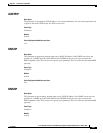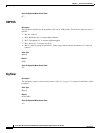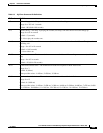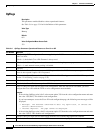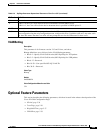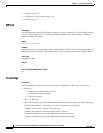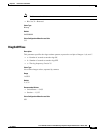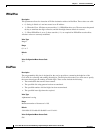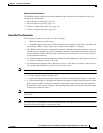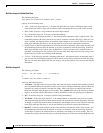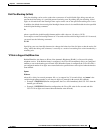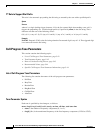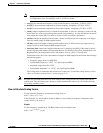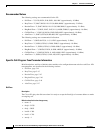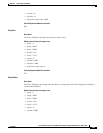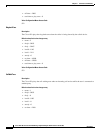
5-39
Cisco ATA 186 and Cisco ATA 188 Analog Telephone Adaptor Administrator’s Guide (SIP)
OL-3410-01
Chapter 5 Parameters and Defaults
Optional Feature Parameters
Additional DialPlan Information
The DialPlan section contains the following additional topics that describe commands and rules for
creating your own dial plan:
• About Dial Plan Commands, page 5-39
• Dial Plan Blocking (In Rule), page 5-41
• 'H' Rule to Support Hot/Warm Line, page 5-41
• 'P' Rule to Support Dial Prefix, page 5-42
About Dial Plan Commands
The following list contains rules for Cisco ATA dial plans:
• . —Wildcard, match any digit entered.
• - —Additional digits can be entered. This command can be used only at the end of a dial plan rule
(for example, 1408t5- is legal usage of the - command, but 1408t5-3... is illegal).
• >#—Defines the # character as a termination character. When the termination character is entered,
the dial string is automatically sent. The termination character can be entered only after at least one
user-entered digit matches a dial plan rule. Alternatively, the command >* can be used to define *
as the termination character.
• tn— Defines the timeout value n, in the unit of seconds, for the interdigit timer. Valid values are 0-9 and
a-z, where a-z indicates a range of 10 to 36.
• rn—Repeat the last pattern n times, where n is 0-9 or a-z. The values a-z indicate a range of 10 to
36. Use the repeat modifier to specify more rules in less space.
Note The commands ># and tn are modifiers, not patterns, and are ignored by the rn command.
• |—Used to separate multiple dial plan rules.
• ^—Logical not. Match any character except the character immediately following the ^ command.
• S—Seize rule matching. If a dial plan rule matches the sequence of digits entered by the user to this
point, and the modifier S is the next command in the dial plan rule, all other rules are negated for
the remainder of the call (for example, a dial plan beginning with *S will be the only one in effect
if the user first enters the * key).
Note All rules apply in the order listed (whichever rule is completely matched first will immediately send the
dial string).
Note No syntax check is performed by the actual implementation. The administrator has the responsibility of
making sure that the dial plan is syntactically valid.



